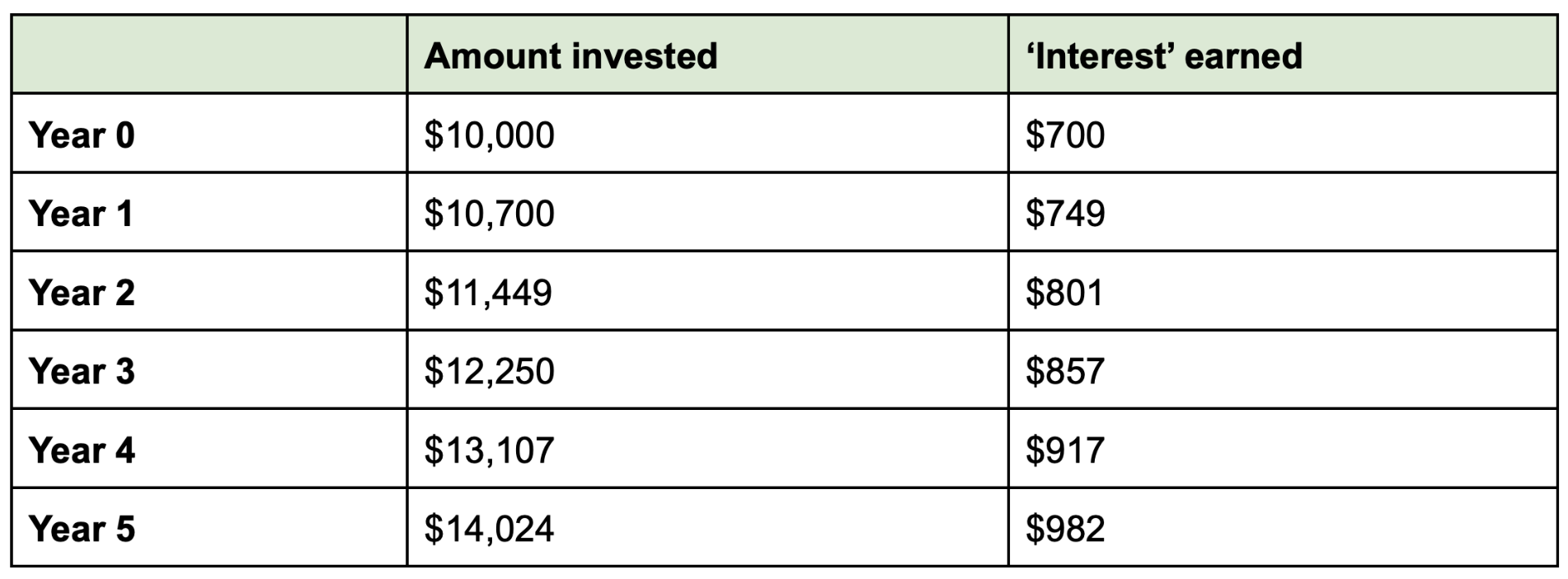Learn how simple interest keeps your money growth steady, while compound interest lets it snowball - helping you build wealth (or debt) faster!
One of the first financial concepts you hear about when you start learning about money is ‘interest’.
When you have a savings account, interest is the amount you earn for storing your money with a bank. On the other hand, if you’re borrowing money from a bank, interest is the amount you need to pay to access borrowed funds.
But did you know, there are two main ways to calculate interest?

Simple Interest
Simple interest is always calculated on the original deposit or borrowed amount (also known as the principal).
The formula is Simple interest = P x R x T where P is principal amount, R is rate of interest, and T is time.
So if you borrowed money to buy a laptop for $2,000 and the store let you pay it off over 2 years with a simple interest rate of 10% per year, you would end up paying $400 ($2,000 x 0.10 x 2) in total interest.
To keep it real though, simple interest has very few real life applications (you’re more likely to see it in school maths questions), but it’s still important to learn because it helps you understand compound interest!
Compound Interest
Compound interest is where the magic happens. It was once described by Albert Einstein as the “8th wonder of the world”.
With compound interest, the interest is calculated on both the principal and accumulated interest from previous periods.
Here’s the formula: Compound interest = P(1+r/n)n×t
But don’t worry, you don’t have to calculate it manually because there are plenty of online calculators to help you work it out!
For example, if you invested $10,000 in the stock market, which has an average annual return of roughly 7% (when adjusted for inflation), here’s what your compound growth might look like.

Notice how the amount you earn each year keeps growing? That’s because the ‘interest’ is calculated on the growing amount you have invested.
You’re essentially earning interest, on top of your interest. And that’s what makes it grow so quickly!
While this can be an incredible thing when you’re saving and investing, remember that this principle applies for debt as well.
If you have borrowed money with compounding interest, it will keep getting larger until you pay it off completely.
Still confused?
Here's simple and compound interest using an apple tree analogy.
Imagine you planted an apple seed.
Simple interest: Every year, your apple tree produces the same number of apples. Even if you pick and eat all of them, next year it produces the same amount again.
Compound interest: Now instead of picking and eating all your apples, you decide to plant some of your harvest. The following year you have a new tree which produces more apples for you. If you keep repeating this cycle over time, you’ll end up with a whole orchard of apple trees that produce way more apples than just having one tree!

Whether you’re planting seeds for future wealth or paying off a loan, knowing the difference between simple and compound interest can help you make smarter money decisions.
Sign up for Flux and join 100,000 members of the Flux family